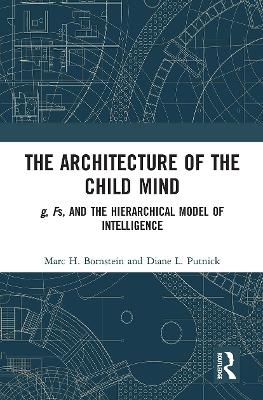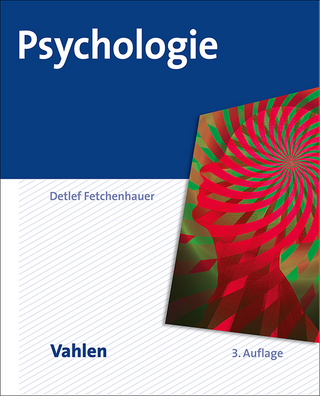
The Architecture of the Child Mind
Routledge (Verlag)
978-1-032-92658-2 (ISBN)
What exactly does it mean to be intelligent? Does intelligence manifest itself in one way or in different ways in children? Do children fit any preconceived notions of intelligence? Some theories assert a general (g) factor for intelligence that is universal and enters all mental abilities; other theories state that there are many separate domains or faculties (Fs) of intelligence; and still others argue that the g and Fs of intelligence coexist in a hierarchical relation. The Architecture of the Child Mind: g, Fs, and the Hierarchical Model of Intelligence argues for the third option in young children. Through state-of-the-art methodologies in an intensive research program conducted with 4-year-old children, Bornstein and Putnick show that the structure of intelligence in the preschool child is best construed as a hierarchically organized combination of a General Intelligence factor (g) and multiple domain-specific faculties (Fs).
The Architecture of the Child Mind offers a review of the history of intelligence theories and testing, and a comprehensive and original research effort on the nature and structure of intelligence in young children before they enter school. Its focus on intelligence will appeal to cognitive, developmental, and social psychologists as well as researchers and scholars in education, particularly those specializing in early childhood education.
Marc H. Bornstein is affiliated with the Eunice Kennedy Shriver National Institute of Child Health and Human Development in Bethesda, Maryland, USA, and is an International Research Fellow at the Institute for Fiscal Studies in London, UK. Diane L. Putnick is a researcher at the Child and Family Research Section of the Eunice Kennedy Shriver National Institute of Child Health and Human Development in Bethesda, Maryland, USA.
Chapter 1: Introduction *
Chapter 2: Empirical and Theoretical Foundations of the Present Study *
Chapter 3: Methods of Study *
Chapter 4: g, Fs, and their Hierarchical Structure *
Chapter 5: Family and Maternal Sociodemographic Factors, g, and Fs *
Chapter 6: Child Characteristics, g, and Fs *
Chapter 7: Subpopulation Analyses of Child Intelligence *
Chapter 8: Individual Difference Patterns of Faculties *
Chapter 9: General Discussion: Head, Heart, and Hand *
References *
Tables and Figures *
| Erscheinungsdatum | 16.10.2024 |
|---|---|
| Verlagsort | London |
| Sprache | englisch |
| Maße | 152 x 229 mm |
| Gewicht | 453 g |
| Themenwelt | Geisteswissenschaften ► Psychologie ► Allgemeine Psychologie |
| Geisteswissenschaften ► Psychologie ► Entwicklungspsychologie | |
| Geisteswissenschaften ► Psychologie ► Pädagogische Psychologie | |
| Geisteswissenschaften ► Psychologie ► Test in der Psychologie | |
| ISBN-10 | 1-032-92658-9 / 1032926589 |
| ISBN-13 | 978-1-032-92658-2 / 9781032926582 |
| Zustand | Neuware |
| Informationen gemäß Produktsicherheitsverordnung (GPSR) | |
| Haben Sie eine Frage zum Produkt? |
aus dem Bereich


